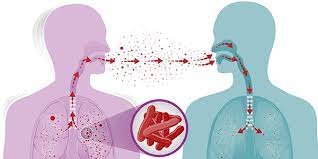Anti-müllerian hormone (AMH) is produced by granulosa cells of small, growing follicles in the ovary. Serum AMH levels strongly correlate with the number of growing follicles, and therefore AMH has received increasing attention as a marker for ovarian reserve. Serum AMH levels are measured to assess the “functional ovarian reserve,” a term that is preferred over “ovarian reserve,” since AMH levels reflect the pool of growing follicles that potentially can ovulate. Ovarian reserve can be defined as the number and quality of follicles in the ovary at any given time. Evaluation of ovarian reserve is recommended for patients who are at risk of decreased or diminished ovarian reserve (DOR).
Fertility
Fertility can be defined as natural capability for having off-spring and measured using fertility rate, i.e., the number of live births per 1000 women. In demographic or socioeconomic context, fertility is measured using the total fertility rate index, which is the total number of children per woman during her whole life. It is well known that women’s fertility is strictly dependent on an individual’s age and that fertility peak occurs in the early 20s and it starts to decline in the third and fourth decades of life (falling sharply after age 35). Menopause is understood as a natural cessation of women’s reproductive ability. It typically occurs in women in their late 40s and early 50s. Therefore, conceiving a baby by women between older than 35 years old can be regarded as fertility in late reproductive age.
Causes of Decreased Fertility
There are a lot of factors responsible for the decrease of fertility in women of late reproductive age. These factors can be classified as oocyte-dependent and oocyte-independent. Oocytes are female gamete cells or immature egg cells which undergo a series of changes that lead to their maturation into a mature egg or ovum. The first group refers to the decreasing number and quality of oocytes with advancing age, and the second is related to reproductive organs (uterus, oviducts) and general health.
Oocyte Dependent Causes.
The loss of oocytes is a continuous process that begins just after the establishment of the oocyte pool during fetal life. At approximately 20 weeks’ gestation, the ovaries in the female fetus contain 6–7 million oocytes, but this number falls rapidly. In total, 1–2 million oocytes remain at birth, and only 300,000–500,000 are present at age of 13 at the onset of puberty. In perimenopausal women, we can find only a few hundred (750–1000) of oocytes.
If we realise that during the reproductive period only 500 oocytes can ovulate, it is obvious that vast of those are lost through apoptosis. With the loss of ovarian follicular pool, women experience cycle shortening, menstrual irregularity, infertility, sterility and finally menopause. Changes in menstrual regularity are observed approximately six years before the beginning of menopause. Age affects not only the size of the oocyte pool but also the quality of germ cells.
Oocyte-independent causes.
In addition to the changes discussed above related to oocyte quality, the ability to achieve and maintain a pregnancy is also dependent on the uterus. Decidual and placental development and embryo implantation are strictly uterus dependent, but epidemiological data show weak association between maternal age and stillbirth rate. This correlation remains even after correction for potential confounders, including fetal chromosomal abnormalities, multiple pregnancy, obesity, pre-eclampsia, insulin-dependent diabetes, and multiple pregnancy.
Oocyte function is dependent on its microenvironment, and the bidirectional communication between the cumulus cells (Group of cells that surround the Oocyte) and the oocyte plays a crucial role. It has been noted that aging is connected with an increase in expression of genes related to angiogenesis (process of forming blood vessels) in cumulus cells. One of the proposed mechanisms affecting chromosome segregation is hypoxia.
Other factors related with advancing women’s age such as uterine pathology, fibroids, endometriosis and endometrial polypus, dysfunctional response of endometrium to hormonal stimulation and finally general health (cardiovascular diseases, metabolic diseases, oncological diseases) can also be considered
AMH as an indicator of Fertility in late Reproductive Age
Female fertility is diminished with increasing age. The atresia of the follicle pool is accelerated in women over 37–38 years. When analysing IVF results published by Human Fertilisation and Embryology Authority (HFEA), the live birth rate for the age range 40–42 was 12.7, 5.1 per cent for ages 43–44, and 1.5 per cent for women aged 45 and older. It is well established that the success of IVF procedures depends on many factors among which the most important and independent ones are age and serum AMH concentration.
Biological clock-career clock! No need to choose one, just develop a balance as per phases!
Fertility is the leading attribute of female life. It is strictly dependent on the individual’s age. Nowadays, there is a strong tendency to postpone entry to motherhood. Therefore, oocyte factors (decrease in oocyte quantity and quality) are the main causes responsible for decrease of fertility in women of late reproductive age. Anti-Müllerian (AMH) hormone seems to be the best endocrine marker for assessing the age-related decline of the ovarian pool in healthy women. AMH can be considered as an indicator of fertility in late reproductive age women and pregnancy outcome in assisted reproductive technology (ART) cycles. AMH can strongly predict poor response in the controlled ovarian stimulation.
(The writer is an Obstetrics & Gynaecologist Surgeon. She is also a senior Counsellor of Army Wives Welfare Association)

























